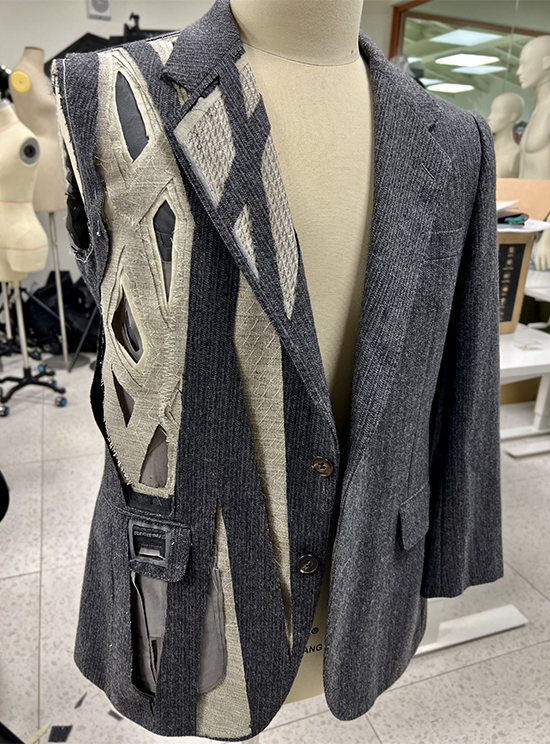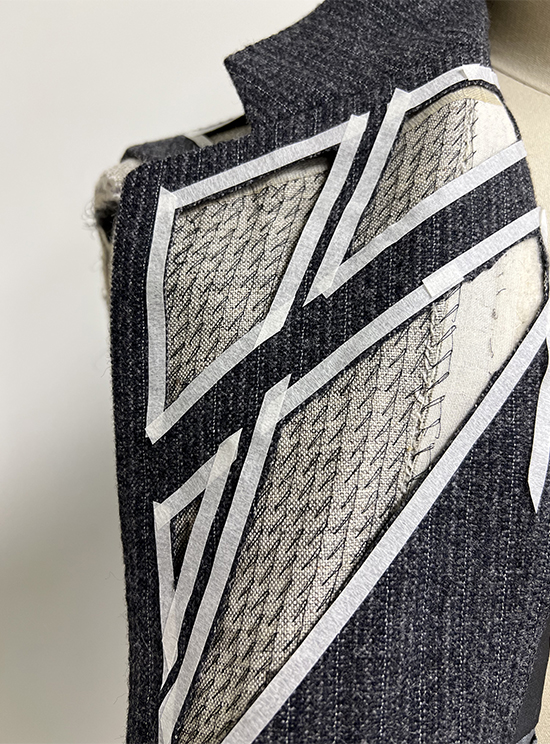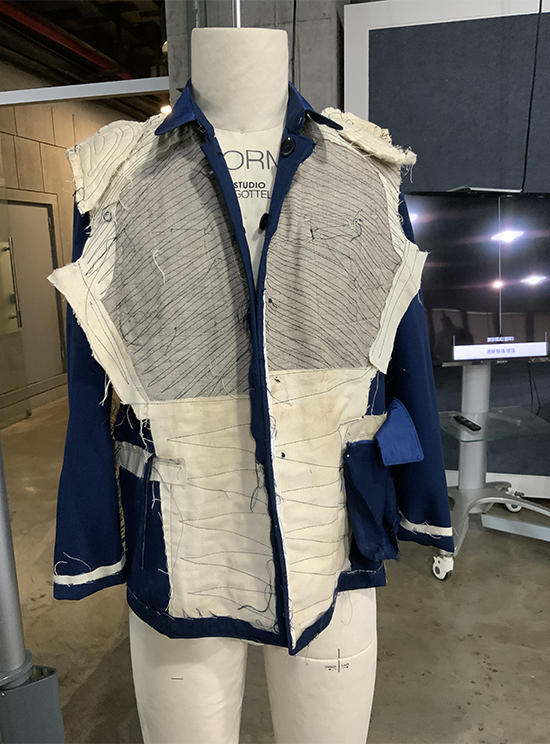
One of the best ways for fashion students to get up-close and personal with garments, is to dissect them and to study the guts of clothing from different periods. It’s a playful way to experiment with form, to learn about construction, and to study manufacturing methods that cannot be replaced by theory lessons alone.

Aquascutum jacket
In the age of digitization, however, students tend to dive into iPads and forget that a fashion designer makes clothes. Clothes that should move well, make the most of the materials they are made of, and help us feel good when we wear them.
Sadly, the current reality is grim at vintage markets. The days of hand-finished jackets and coats are long gone, and the stalls are awash with residues of tasteless mass market monotony. There’s nothing to discover inside those garments but cheap interlinings, badly finished seams, and although some creative experimental play can still get the design ideas flowing, there’s meager pickings for learning about the true craft and art behind it.
As a fashion student, I would spend my spare money on vintage clothing and it became a way to learn about techniques, to experiment with style and to get a better understanding and a firsthand feel of fashion history. I learned to recognize potential treasures in tailoring and discovered that beauty really does lie within. This prompted me to talk my way into a tailor’s studio and I got to observe the rituals behind the wonderful universe of made-to-measure garments.
A tailor’s fingers can tell the direction of the pile of a fine wool fabric. His hands are equally sensitive as they are firm, and somehow a tailor masters the art of achieving the perfect fit whilst not forcing the textile to do anything unsuitable. He carefully chooses each piece of textile not only considering its weave, pattern and color, but also the nature and life conditions of the sheep that gave up their fleece.
He “shocks” the wool with a cold damp cloth and a hot iron and lets the fabric hang for a day before drafting the block onto it. The fibers now hook onto each another tightly and ready themselves to be cut and shaped with scissors and steam without shrinking or losing their shape. The tailor then cuts out the jacket with heavy scissors that slice through the material with the help of gravity rather than mechanical force as the textile rests comfortably on a wooden table.
A jacket is more than a shell to a body. It’s a formal presentation of style, an elevation that oozes respect for the skill and time invested into its creation. The shape of a jacket enhances the body by filling out here and there, evening out imbalances and proportions and by using supporting structure to sharpen and smoothen areas like the shoulders. The support is made of layers of horsehair canvas, which has a natural spring-like texture and slight stiffness and is never just hard. Layers are shaped by slashing and tacking them together as the tailor’s hands keep perfect stitch tension to mold the shape of a chest piece. Hundreds of perfect stitches keep everything in place whilst allowing the materials to still move slightly.

Aquascutum jacket
Not only can a tailored jacket hold its shape well, but it can also adjust to suit the owner’s body as it changes over time. This tremendous craft requires experience, patience and attention to detail that most of us cannot afford and yet the evidence of all that effort is not visible.
The beauty lies within, on the inside, and builds a close relationship between jacket, client and tailor. A mutual appreciation of dedication, sacrifice and love that is vulgar to display and too intimate to brag about.
The inside of a 1960s jacket is not just elegant but tells us about people and a time when longevity mattered.
I studied old jackets as a student and so do my current students here in Shanghai, but what they are discovering today is quite different. One curious student undertook to deconstruct her grandfather’s mid-20th-century Mao jacket: what she found was a family story as well as a piece of Chinese history.

Mid-20th-century Mao jacket
The jacket was made from durable, slightly coarse wool and it was cut not as a bespoke piece, but rather as a uniform that speaks of sameness and being united. It’s perhaps surprising that the supporting canvases seem to follow the same principles as the tailored jacket but, if you look closer, they are not the same at all. The inside bears witness to speedy manufacturing and loss of fine details and functions.
The hand stitches that normally shape the canvases had been replaced by frenzied machine stitches that aimlessly zigzagged across the low-quality materials.
Survival mode frowns on wastefulness and spending time on beauty, and the traces of harder times have been imprinted into the inside of a jacket that remain clear for us to read. Fast production for the masses and the symbolism of its carefully designed details, like mountain-shaped pocket flaps, were what mattered. This jacket represents the removal of handmade details, individuality and even gender and in a strange twist, this sounds like a lot of the modern clothing we buy day-to-day.
“Fashion is not an Island, it’s a response,” said Fashion and Costume History Professor Amanda Hallay. So, it appears that we can learn more about the past by digging deeper and having a look at the inside of well-loved garments.
